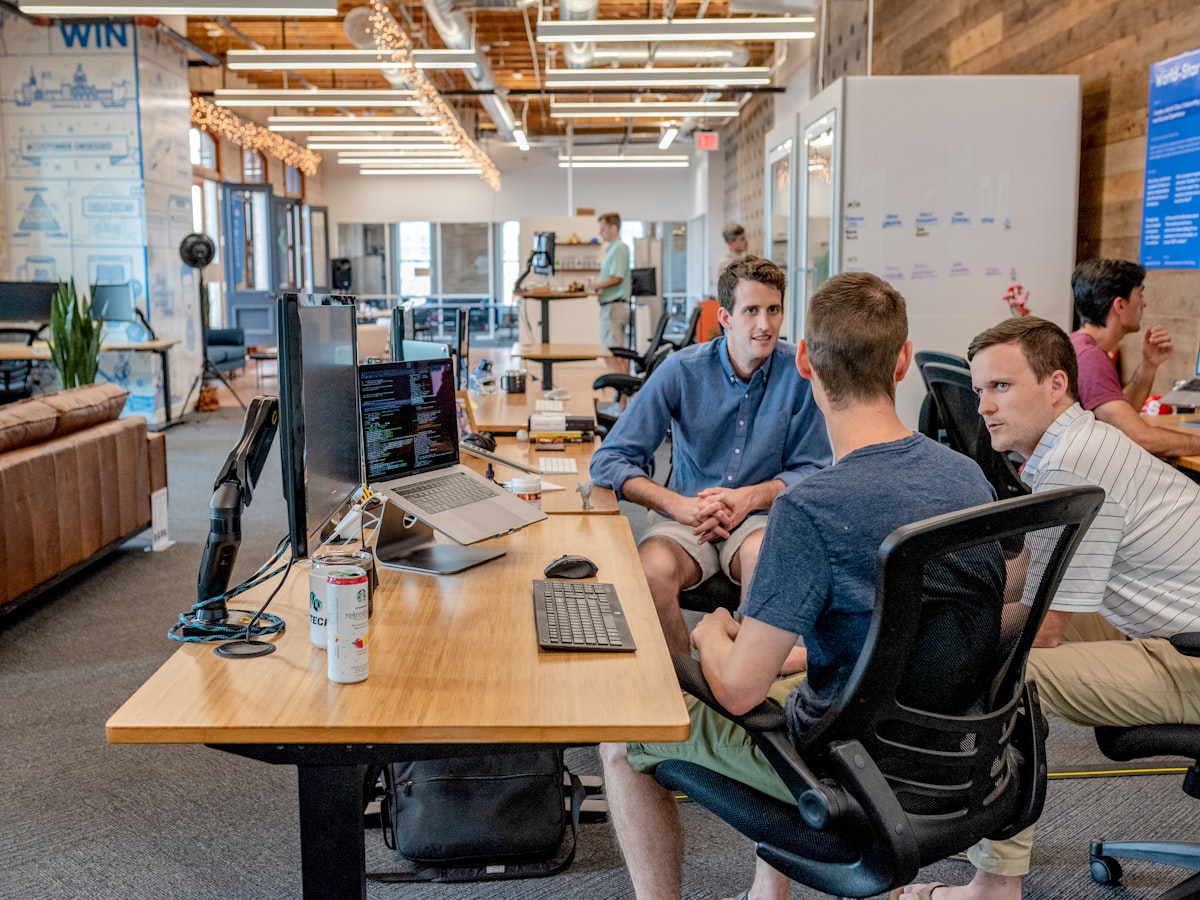A Beginner's Guide to Full Stack Web Development: From Frontend to Backend Mastery

Learn everything you need to know about full stack web development. From HTML and JavaScript to databases and deployment, this comprehensive guide covers the complete journey from beginner to professional developer.
Ever wondered how websites like Facebook, Netflix, or your favorite online store actually work? Behind every smooth user experience lies the magic of full stack web development – the art and science of building both what users see and the powerful systems that make it all function. If you've ever dreamed of creating your own web applications or launching a career in tech, you're in the right place. This comprehensive guide will take you on a journey from complete beginner to understanding every piece of the web development puzzle.
What is Full Stack Development?
Full stack web development is like being a digital architect who can design both the beautiful facade of a building and engineer all the complex systems inside. A full stack developer works on both the frontend (what users see and interact with) and the backend (servers, databases, and logic that power the application). Think of it as being fluent in two languages – the visual language that speaks to users and the technical language that speaks to computers.
What makes full stack developers incredibly valuable is their ability to see the big picture. They understand how a button click on a webpage connects to a database query, how user data flows through different systems, and how to optimize the entire user experience from start to finish. This holistic understanding makes them versatile problem-solvers who can work on any part of a web application.
- Frontend: User interfaces, interactions, and visual design
- Backend: Server logic, APIs, and data processing
- Databases: Data storage, retrieval, and management
- DevOps: Deployment, hosting, and infrastructure
- Version Control: Code management and collaboration
Front-End Development: Building the User Interface
Frontend development is where creativity meets code. It's the process of bringing designs to life and creating the interactive experiences users love. When you click a button, scroll through a page, or fill out a form, you're interacting with frontend code. The frontend is essentially the presentation layer of web applications – it's what users see, touch, and experience.
HTML: The Structure of the Web
HTML (HyperText Markup Language) is like the skeleton of a webpage. It defines the structure and content – where the heading goes, where paragraphs belong, and how different elements relate to each other. While HTML alone creates very basic pages, it's the foundation upon which everything else is built.
My First Web Page
Welcome to My Website
Hello, World!
This is my first webpage built with HTML.
CSS: Making It Beautiful
CSS (Cascading Style Sheets) is like the clothing and makeup for your HTML skeleton. It controls colors, fonts, layouts, animations, and responsive design. Modern CSS is incredibly powerful, capable of creating stunning visual effects and ensuring your website looks great on everything from smartphones to large desktop screens.
JavaScript: Bringing Pages to Life
JavaScript is the brain of frontend development. It makes websites interactive and dynamic. Without JavaScript, clicking a button wouldn't do anything, forms couldn't validate input, and pages couldn't update content without refreshing. Modern JavaScript can handle complex animations, real-time data updates, and sophisticated user interactions.

Modern frontend development involves HTML for structure, CSS for styling, and JavaScript for interactivity
Modern Frontend Frameworks: React, Vue, and Angular
While you can build amazing websites with vanilla HTML, CSS, and JavaScript, modern frameworks make development faster and more organized. React (by Facebook), Vue.js, and Angular are like power tools for frontend development – they provide pre-built components, efficient data management, and sophisticated development workflows that help you build complex applications more efficiently.
Back-End Development: Behind the Scenes
If frontend is what users see, backend is the wizard behind the curtain making everything work. Backend development involves server-side programming, database management, API creation, and ensuring your application can handle real users, process data securely, and scale as your user base grows. It's the engine room of web applications.
Server-Side Programming Languages
Backend developers have many language options, each with its own strengths. Python is loved for its simplicity and powerful frameworks like Django and Flask. Node.js allows you to use JavaScript on both frontend and backend. PHP powers millions of websites including WordPress. Java and C# are enterprise favorites, while newer languages like Go and Rust are gaining popularity for high-performance applications.
const express = require('express');
const app = express();
const port = 3000;
// Middleware to parse JSON requests
app.use(express.json());
// Simple API endpoint
app.get('/api/users', (req, res) => {
const users = [
{ id: 1, name: 'John Doe', email: '[email protected]' },
{ id: 2, name: 'Jane Smith', email: '[email protected]' }
];
res.json(users);
});
// Create new user endpoint
app.post('/api/users', (req, res) => {
const { name, email } = req.body;
const newUser = {
id: Date.now(),
name,
email
};
res.status(201).json(newUser);
});
app.listen(port, () => {
console.log(`Server running at http://localhost:${port}`);
});APIs: Connecting Frontend and Backend
APIs (Application Programming Interfaces) are like waiters in a restaurant – they take requests from the frontend, communicate with the backend kitchen (database and logic), and bring back the results. RESTful APIs and GraphQL are the most popular approaches for building these communication bridges between different parts of your application.

Backend development involves server management, databases, and API development
Common Full Stack Tech Stacks
A tech stack is like a recipe for building web applications – it's the combination of technologies, frameworks, and tools that work together to create a complete solution. Different stacks have different strengths, and choosing the right one depends on your project requirements, team expertise, and business goals.
| Stack Name | Frontend | Backend | Database | Best For |
|---|---|---|---|---|
| MERN | React.js | Node.js + Express | MongoDB | Modern SPAs, Real-time apps |
| MEAN | Angular | Node.js + Express | MongoDB | Enterprise applications |
| LAMP | HTML/CSS/JS | PHP | MySQL | Traditional websites, WordPress |
| Django + React | React.js | Python + Django | PostgreSQL | Data-heavy applications |
| Vue + Laravel | Vue.js | PHP + Laravel | MySQL | Rapid prototyping |
| Next.js Full Stack | React/Next.js | Next.js API | PostgreSQL | JAMstack applications |
| Ruby on Rails | HTML/CSS/JS | Ruby on Rails | PostgreSQL | Startups, MVPs |
| ASP.NET | React/Angular | C# + .NET | SQL Server | Enterprise applications |
Choosing a tech stack isn't about finding the 'best' one – it's about finding the right fit for your specific needs. Consider factors like your team's expertise, project timeline, scalability requirements, community support, and long-term maintenance. Many successful companies use different stacks for different projects based on what makes the most sense for each use case.
The Role of Databases in Web Apps
Databases are the memory of your web application – they store, organize, and retrieve all the information your app needs to function. From user profiles and preferences to product catalogs and transaction histories, databases handle the persistent storage that makes your application useful and stateful. Understanding databases is crucial for any full stack developer.
Relational vs. Non-Relational Databases
Think of relational databases (SQL) like organized filing cabinets with clearly defined drawers, folders, and labels. They're perfect for structured data with clear relationships – like customer orders, inventory management, or financial records. Non-relational databases (NoSQL) are more like flexible storage spaces that can hold different types of items in various containers – ideal for social media posts, real-time chat messages, or rapidly changing data structures.
| Database Type | Examples | Strengths | Best Use Cases |
|---|---|---|---|
| Relational (SQL) | MySQL, PostgreSQL, SQLite | ACID compliance, Complex queries, Data integrity | E-commerce, Banking, CRM systems |
| Document | MongoDB, CouchDB | Flexible schema, JSON-like documents | Content management, Catalogs |
| Key-Value | Redis, DynamoDB | High performance, Simple operations | Caching, Session storage |
| Graph | Neo4j, Amazon Neptune | Relationship mapping, Complex connections | Social networks, Recommendations |
| Time-Series | InfluxDB, TimescaleDB | Time-stamped data, Analytics | IoT sensors, Monitoring |
| In-Memory | Redis, Memcached | Ultra-fast access, Temporary storage | Real-time applications, Gaming |
Hosting and Deployment: Putting Your App Online
Building an amazing web application is only half the battle – you also need to deploy it so real users can access it. Deployment involves taking your code from your development environment and setting it up on servers where it can handle real traffic, scale with demand, and stay online 24/7. Modern deployment platforms have made this process much more accessible to beginners.
Modern Deployment Platforms
Today's deployment platforms handle much of the complexity for you. Vercel and Netlify excel at frontend applications and static sites. Heroku makes backend deployment incredibly simple with git-based workflows. Railway and Render offer modern alternatives with great developer experience. For more control and scalability, cloud providers like AWS, Google Cloud, and Azure provide comprehensive infrastructure services.
- Write and test your code locally
- Commit your changes to Git version control
- Push your code to a repository (GitHub, GitLab)
- Connect your repository to a deployment platform
- Configure build settings and environment variables
- Deploy and test in production environment
- Set up continuous deployment for automatic updates

Modern web deployment involves cloud platforms and automated deployment pipelines
Essential Tools for Full Stack Developers
Professional web development requires more than just knowing programming languages – you need the right tools to write, test, collaborate, and deploy your code efficiently. These tools form the foundation of your development workflow and can dramatically impact your productivity and code quality.
Code Editors and IDEs
- Visual Studio Code: Free, extensible, with excellent debugging and Git integration
- WebStorm: Powerful IDE with advanced refactoring and intelligent code completion
- Sublime Text: Fast, lightweight editor with powerful search and customization
- Atom: Open-source editor with community packages and themes
- Vim/Neovim: Terminal-based editors for keyboard-focused developers
Version Control: Git and GitHub
Git is like a time machine for your code – it tracks every change, allows you to collaborate with others without conflicts, and lets you experiment safely knowing you can always revert to a working version. GitHub, GitLab, and Bitbucket provide cloud-based Git hosting with additional collaboration features like pull requests, issue tracking, and project management.
Package Managers and Build Tools
Package managers like npm (Node.js), pip (Python), and Composer (PHP) handle external libraries and dependencies. Build tools like Webpack, Vite, and Parcel optimize your code for production. These tools automate repetitive tasks, manage project dependencies, and ensure your application performs well in production environments.
Learning Path: How to Become a Full Stack Developer
Becoming a full stack developer is a journey that requires patience, practice, and a structured approach. The key is to build a solid foundation before moving to advanced topics, and to practice constantly by building real projects. Here's a proven roadmap that has helped thousands of developers launch successful careers.
Step-by-Step Learning Roadmap
- Master HTML and CSS fundamentals (2-3 months)
- Learn JavaScript programming and DOM manipulation (2-3 months)
- Choose and learn a frontend framework (React, Vue, or Angular) (2-3 months)
- Understand backend concepts and choose a server-side language (2-3 months)
- Learn database design and SQL fundamentals (1-2 months)
- Build full stack projects combining frontend and backend (3-6 months)
- Learn deployment, hosting, and DevOps basics (1-2 months)
- Develop portfolio projects and contribute to open source (ongoing)
Top Learning Resources for Full Stack Development
freeCodeCamp
Comprehensive free curriculum covering full stack development with hands-on projects
Coursera - Web Development
University-level courses from top institutions with certificates
YouTube - Programming Channels
Free video tutorials from experienced developers and educators
Real-World Projects to Practice
The best way to learn full stack development is by building real projects. Each project teaches you different skills and helps you understand how various technologies work together. Start with simple projects and gradually tackle more complex challenges as your skills improve.
| Project | Difficulty | Frontend Tech | Backend Tech | Key Learning |
|---|---|---|---|---|
| Personal Portfolio | Beginner | HTML/CSS/JS | Static hosting | Responsive design, deployment |
| Todo List App | Beginner | React/Vue | Node.js/Django | CRUD operations, state management |
| Weather App | Beginner | JavaScript | API integration | External APIs, async programming |
| Blog Platform | Intermediate | React/Vue | Node.js/Django | User auth, content management |
| E-commerce Store | Intermediate | React/Next.js | Node.js/Python | Payment processing, cart logic |
| Social Media Clone | Advanced | React/Vue | Node.js/Django | Real-time features, complex data |
| Project Management Tool | Advanced | React/Angular | Node.js/Django | Team collaboration, permissions |
| Video Streaming Platform | Expert | React/Vue | Node.js/Python | File upload, video processing |
Building Your Developer Portfolio
- Choose 3-5 high-quality projects that showcase different skills
- Include live demos and clean, well-documented source code
- Write detailed project descriptions explaining your technical choices
- Show the problem you solved and the impact of your solution
- Make your portfolio itself a showcase of your frontend skills
- Include a professional photo and compelling personal story

A well-organized development environment enhances productivity and project success
Why Full Stack Developers Are in High Demand
The demand for full stack developers has never been higher. Companies love hiring developers who can work across the entire technology stack because it means faster development, better communication between frontend and backend teams, and more versatile problem-solving. Whether you want to work for startups, large corporations, or as a freelancer, full stack skills open doors to exciting opportunities.
Career and Freelance Opportunities
- Higher salary potential due to versatile skill set
- Ability to work independently on complete projects
- Strong foundation for leadership and technical architecture roles
- Opportunities in startups, enterprises, and consulting
- Flexibility to specialize in areas that interest you most
- Strong demand in remote work and freelance markets
The web development industry continues to grow as businesses increasingly rely on digital solutions. From e-commerce and fintech to healthcare and education, every industry needs web applications. The Bureau of Labor Statistics projects web developer employment to grow 8% from 2019 to 2029, much faster than the average for all occupations.
Learning full stack web development is challenging but incredibly rewarding. You're not just learning to code – you're learning to solve problems, think systematically, and build solutions that can impact thousands or even millions of users. Every expert developer started exactly where you are now, with curiosity and determination to learn.
Ready to start your full stack development journey? Begin with the fundamentals, practice consistently, and don't be afraid to build imperfect projects – they're stepping stones to mastery. The web development community is welcoming and supportive, so dive in, ask questions, and start building the future of the web!
Tags:
Related Posts
Comments
Leave a Comment
No comments yet
Be the first to share your thoughts!





